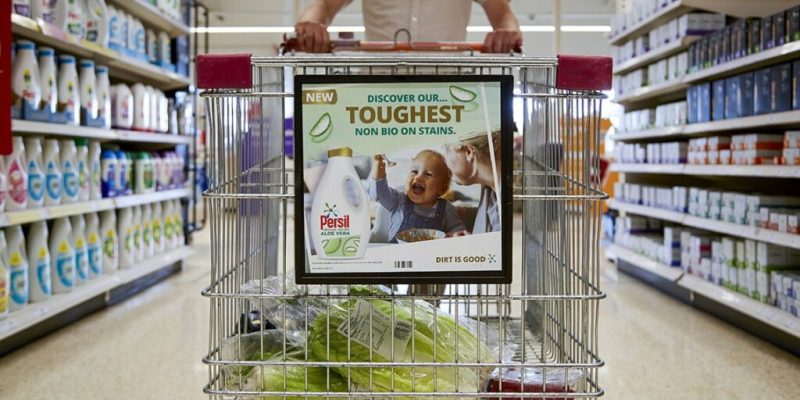In Store Advertising: Strategies to Drive Sales Where It Matters Most

In the age of digital marketing, in-store advertising remains a powerful tool to capture attention and drive conversions at the exact moment of purchase. This form of marketing refers to any promotional activity that takes place inside a retail environment—from shelf signage to digital displays and experiential brand activations.
With 70% of buying decisions made at the point of sale, in store advertising offers a unique opportunity to influence consumer behavior when it matters most. In this guide, we’ll explore in-store advertising strategies, formats, technologies, and best practices for retailers and brands looking to boost ROI.
What Is In Store Advertising?
In store advertising is a marketing tactic that promotes products, offers, or brands within a physical retail location. It targets customers already in the store, increasing the likelihood of impulse purchases, cross-selling, and brand engagement.
Common goals of in-store advertising:
- Increase product visibility
- Promote limited-time offers
- Educate customers about features/benefits
- Drive higher basket value
- Reinforce brand recognition
Types of In Store Advertising
Here are the most popular in-store advertising formats:
Point-of-Purchase (POP) Displays
Custom signage or fixtures placed near checkout counters or aisles to highlight products.
Digital Signage
Screens showing dynamic promotions, product videos, or brand messages. Can be updated in real time.
Shelf Talkers and Price Tags
Small signs attached to shelves to draw attention to discounts, new arrivals, or top-selling items.
End Cap Displays
Prominent product placements at the end of store aisles—ideal for high-margin or seasonal items.
In-Store Audio Ads
Overhead announcements or background music channels used to promote products or upcoming sales.
Product Demos and Sampling Stations
Live or interactive setups where shoppers can try or experience a product firsthand.
QR Codes and Smart Shelving
Digital interaction points that provide more info, coupons, or mobile engagement.
Benefits of In Store Advertising
Immediate Impact
Influences customers while they’re actively making purchase decisions—perfect for impulse buys.
Cost-Effective Promotion
Compared to mass media ads, in-store marketing is relatively low-cost with a high return potential.
Enhanced Customer Experience
Well-executed displays and signage add value and help shoppers make informed choices.
Boosts Brand Awareness
In-store placements reinforce branding and increase visibility among both loyal and new customers.
Retailer-Brand Collaboration
Brands can partner with retailers to co-create campaigns that benefit both parties.
How In Store Advertising Supports Omnichannel Marketing
While online shopping continues to grow, 80% of retail purchases still occur in physical stores. A successful marketing strategy combines in-store efforts with digital touchpoints like:
- Mobile apps
- Loyalty programs
- Geo Targeted SMS offers
- QR codes leading to product videos or online coupons
By integrating your in-store advertising with online marketing campaigns, you create a seamless and more personalized shopping journey.
How to Create an Effective In Store Advertising Strategy
Know Your Audience
Segment your customer base by demographics, behavior, and buying intent to tailor messaging.
Choose the Right Placement
Position ads near high-traffic areas, eye-level shelves, or entrance/exit points.
Use Clear and Concise Messaging
Focus on value-driven language: benefits, discounts, limited-time urgency.
Keep Design On-Brand
Ensure fonts, colors, and imagery align with your brand identity and complement the store environment.
Track Performance
Use sales data, customer feedback, and foot traffic analytics to measure the success of each in-store campaign.
Technologies Enhancing In Store Advertising
| Technology | Application |
| Digital Signage | Rotating ads, video content, real-time updates |
| RFID & Smart Shelves | Tracks inventory, enables interactive displays |
| Mobile Beacons | Sends offers to nearby shoppers via Bluetooth |
| Augmented Reality (AR) | Virtual try-ons or product interactions |
| Touchscreen Kiosks | Product locators, reviews, or upselling tools |
These innovations bridge the gap between physical and digital, offering data-rich insights and improved customer engagement.
Examples of Successful In Store Advertising Campaigns
Coca-Cola’s Custom Bottle Displays
Coca-Cola used personalized name labels and in-store displays to encourage impulse purchases and social sharing.
Nike’s AR-Enabled Store Mirrors
Nike integrated AR tech that allowed customers to try on shoes virtually and access product info right from the mirror.
Target’s End Cap Promotions
Target features strategic end cap deals tied to current promotions and seasonal products, boosting average order value.
Retail Categories That Benefit Most from In-Store Advertising
- Grocery and supermarkets
- Beauty and cosmetics
- Apparel and footwear
- Electronics and tech
- Health and wellness
- Home improvement and décor
Any physical retail business can benefit from smart, targeted in-store campaigns.
In Store Advertising vs. Online Advertising
| Factor | In-Store Advertising | Online Advertising |
| Audience Intent | High—shoppers already in-store | Variable—awareness to action |
| Cost | Lower ongoing cost | Can be expensive (CPC, CPM) |
| Measurement | POS sales, traffic counters | Clicks, impressions, conversions |
| Personalization | Local and contextual | Highly personalized |
| Speed of Impact | Instant | Varies (click-to-buy journey) |
Conclusion: The most effective strategy combines both in a unified omnichannel approach.
Conclusion
While eCommerce dominates headlines, in store advertising continues to drive real-world results. It captures attention at the moment of purchase, supports branding, and delivers ROI across product categories.
From traditional signage to cutting-edge digital displays, in-store advertising remains a critical piece of a successful retail marketing strategy. If you want to influence customer decisions, boost sales, and create a memorable shopping experience—start where it counts: in-store.
FAQs
1. What is in store advertising?
In-store advertising refers to promotional displays, signage, or activities inside a retail space designed to influence purchasing decisions.
2. Why is in-store advertising effective?
Because it reaches customers while they’re shopping—when buying intent is highest—and can drive impulse purchases and brand recall.
3. What are some examples of in-store advertising?
Examples include point-of-purchase displays, shelf signage, digital kiosks, sampling stations, and in-store audio ads.
4. How can I measure in-store advertising success?
Track sales before and after campaigns, monitor foot traffic, and use shopper surveys or retail analytics tools.
5. Is in-store advertising expensive?
Not necessarily. Many formats, like shelf talkers and end caps, are low-cost with high impact. Digital signage may have upfront costs but offers long-term ROI.
Also read: Fridge Hotel: Everything You Need to Know Before Booking Your Stay











